What is there to say about a Mountain Bluebird, a bird of the west, of high elevation grasslands, of the Rocky Mountains, in New York State? What is there to say, that is, other than “Wow” as you head out the door to track it down? First found on Monday by Lenore Swenson and Diane Teta while it was feeding along a fence line in Suffolk County, on eastern Long Island, the bird was found again on Tuesday, so I made a pre-work chase after it on Wednesday morning.
Mountain Bluebirds have been spotted in New York State at least seven times since the first record in Greene County in 1975 (making this the eighth), most recently, I believe, about five years ago at Robert Moses State Park. Sialia currucoides tend to linger for several days and this bird seems to be following that trend. The only negative about this sighting, if there is really a negative about such a great creature, is that it is a drab bird, either a female or a first-year male, not the brilliant blue of an adult male.
Anyway, I arrived at the spot the bird has been frequenting – the intersection of Hulse Landing Road and 25A – before dawn. At first the bird was not in evidence and I entertained myself by watching Horned Larks take off, fly around, and land, and then trying to find them once they were on the ground. I failed miserably. Then, as if by magic, the Mountain Bluebird was on the fence.
When I first saw the bird the sun had barely risen and was still behind clouds so the views weren’t as nice as when most of these pictures were taken, which is when the sun had started shining. I had the bird for about forty-five minutes before it took off, circled a couple of times, and disappeared. This did not endear me to the horde of birders who showed up over the next hour or so before I had to get going in order to get to work.* I was glad to hear that it was refound shortly after I left.
The coolest behavior I observed while watching the bird as it foraged, took a dust bath, and preened, was its method of flying into the wind and hovering as it looked for what I assume was insect prey. I never actually saw it eat anything but most of the time it seemed to hit the ground in the tall grass and stay down for a bit so it might have been consuming whatever it was catching before flying back to the fence. I did see it poop four times so it must have been getting something to eat!
Mountain Bluebird was my 372nd species of the year, my 478th ABA-area bird, and my 1,048th life bird.
If you liked this post and want to see more great images of birds make sure to check out 10,000 Clicks, our big (and growing) page of galleries here at 10,000 Birds.
*Though the fact that I was working from home for the day made it easier to get there in a timely way.
…


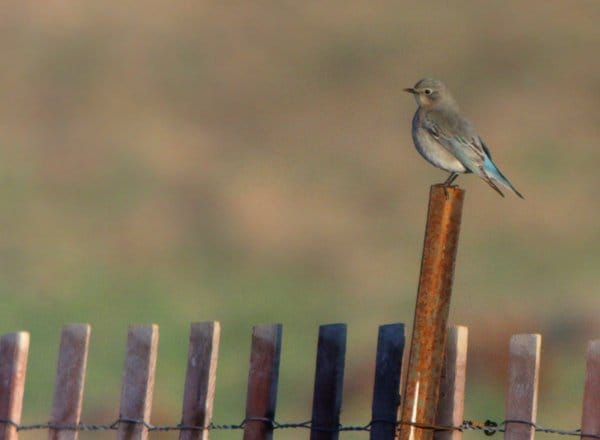
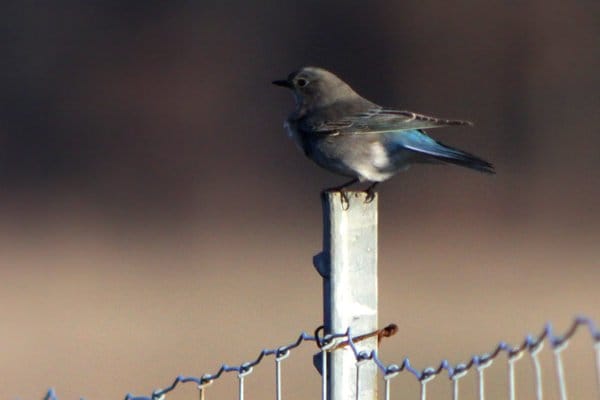
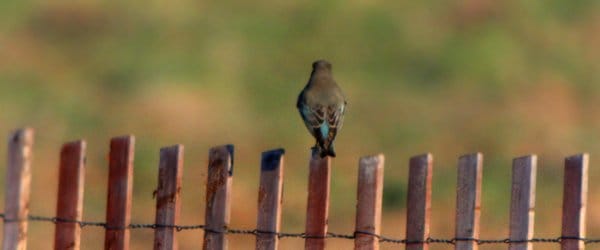
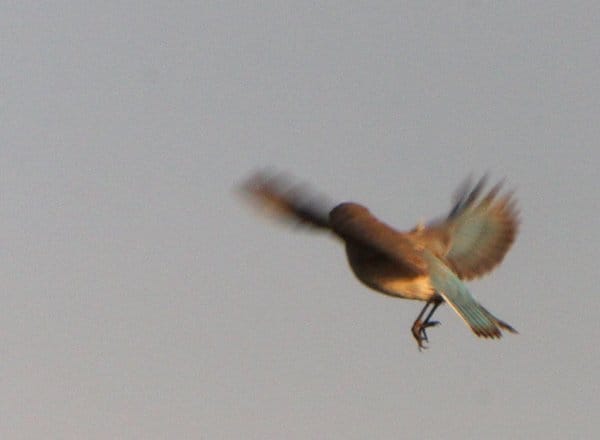
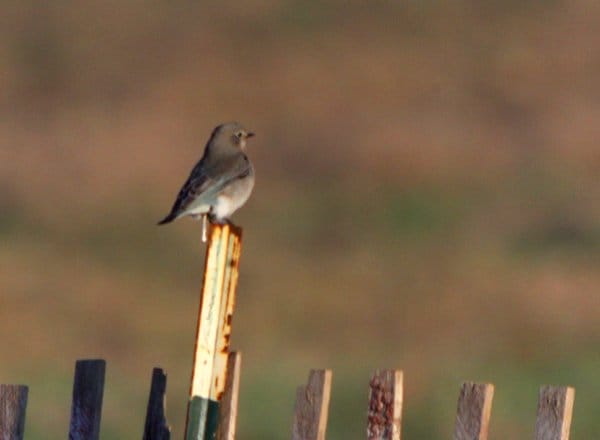
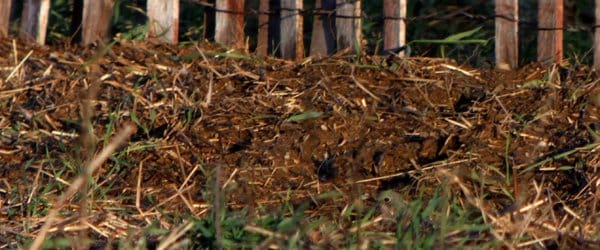
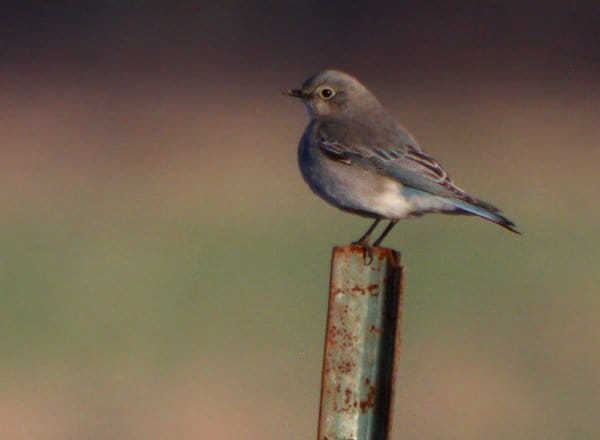










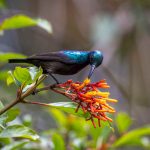
Since I am from the Pacific Northwest this is a bird I have seen in my neck of the woods. How marvelous for you to spot it in upstate N.Y. Certainly a way of demonstrating the changing flows of our world.
Nice pics, I am glad you got to see it Corey. It is funny that this bird was found not all that far from the Robert Moses one from a few years ago.
@Collie: the bird is on Long Island, not upstate, and is roughly the eastern part of LI right where it splits into north & south forks.
Congrats on getting a cool year/state/life bird. I wish I had that on my NY state list!
One of my favourite events when I lived in Fort Providence, NWT was the arrival of the Mountain Bluebirds on the spring migration. They were one of the earliest migrants through and their colour against the snowbanks was absolutely stunning.
Corey,
I am no bird expert, but I was hiking in Harriman State Park, NY, last week and I observed a male mountain bluebird. I began researching the bird when I came home because I have been hiking in New York for years and have never seen anything like this. Unless there is a bird that looks exactly like a mountain bluebird in the area that I am unaware of this was definitely the bird. Send me an email if you are interested in more information. I have the specific location, at the top of a mountain coincidentally, where I spotted this beautiful guy.
I was just blessed with a visit from a Mountain Bluebird at my house in West Park, NY (in the Hudson Valley). Unfortunately, this spectacularly beautiful bird flew into one of our windows the following day and was killed. It was heartbreaking to witness. I am going to keep an eye out for the female. In the meantime, we gave the male a proper burial.
Saw a Mountain Bluebird in Trumansburg, NY on July 5 at approximately 6pm in the late afternoon.
I hope you got a picture because Mountain Bluebird is extremely unlikely in New York, especially in July.
I saw a male Mountain Bluebird in Lake Ronkonkoma Long Island NY yesterday!
If you are serious please provide more details and/or a photo! Lots of people would want to see that bird.
I just observed a Mountain Bluebird in Waterford NY which is just north of Albany. I can’t attach a picture here, but I just left a post on my Twitter (@Fifieldc11) page where you can find it.
I was walking my dogs in Groveland, NY (which is south of Rochester) on May 27, 2024. I heard this sound & looked over and there was this beautiful bird up in a tree right next to me. I took a picture & looked it up. It was a Mountain Bluebird.